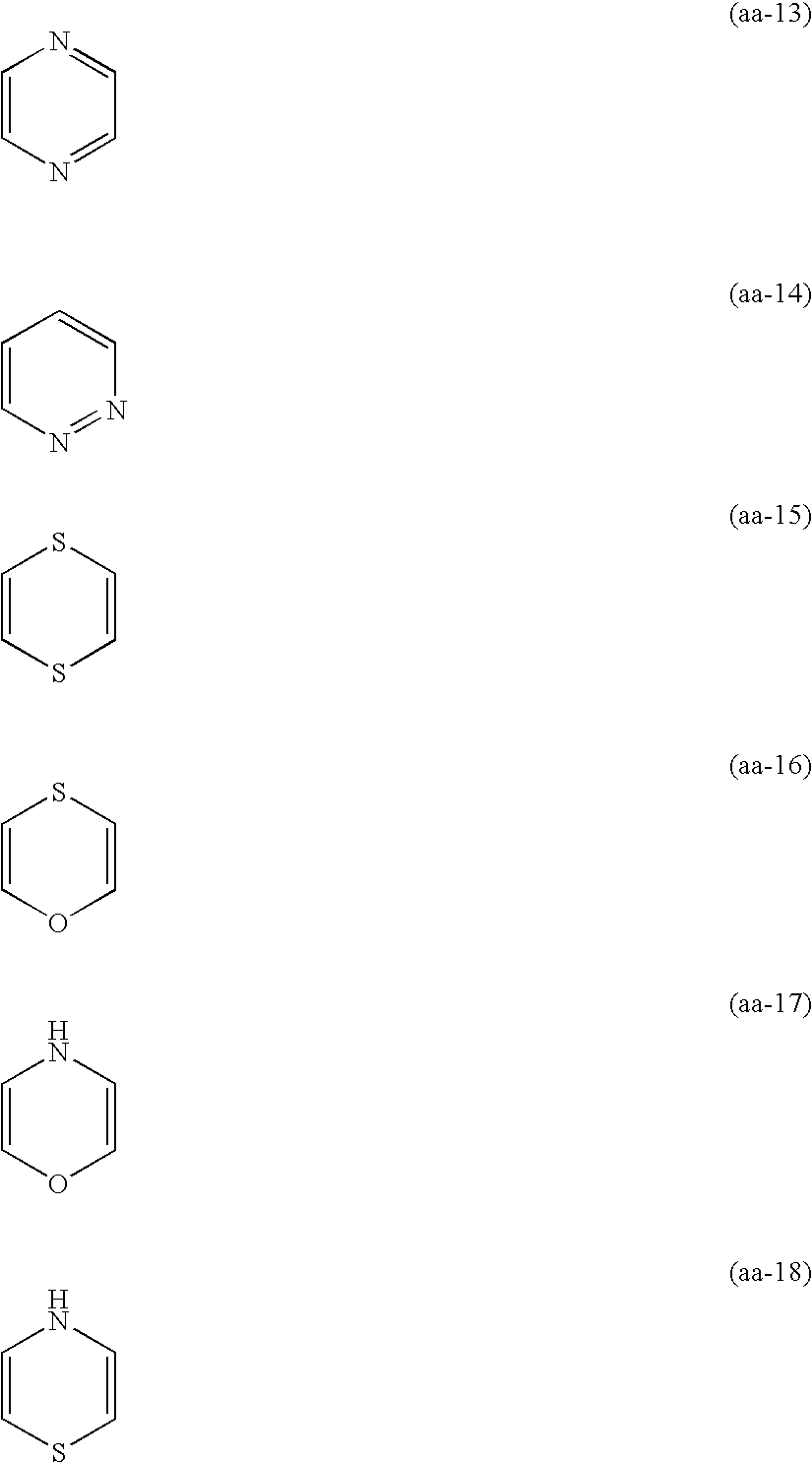Siliver halide color photosensitive material
a color photosensitive material and silver halide technology, applied in the field of silver halide color photosensitive materials, can solve the problems of increasing film cost, affecting the quality of silver, and inviting the deterioration of desilvering characteristics, and achieves the effects of reducing the thickness of tabular grains, reducing the amount of silver coating, and high sensitivity
- Summary
- Abstract
- Description
- Claims
- Application Information
AI Technical Summary
Benefits of technology
Problems solved by technology
Method used
Image
Examples
example 1
Silver halide emulsions Em-A1 to Em-O1 specified in Table 1, silver halide emulsions Em-A2 to Em-O2 specified in Table 2 and silver halide emulsions Em-A3 to Em-O3 specified in Table 3 were prepared in the same manner as employed in the process for preparing emulsions Em-A to Em-O described in Example 1 of JP-A-2001-281815, except that the amounts of nucleation silver and gelatin were changed. Further, the regular-crystal emulsions Em-P1 to Em-P5 specified in Table 4 were prepared.
TABLE 1AverageAverageAveragesilverequivalent-equivalent-AverageEmul-iodidesphereAveragecirclegrainsioncontentdiameteraspectdiameterthicknessname(mol %)(μm)ratio(μm)(μm)Halide compositionShapeEm-A140.8591.540.17Silver iodobromideTabularEm-B14.70.7481.290.16Silver iodobromideTabularEm-C13.50.5170.850.12Silver iodobromideTabularEm-D13.70.3530.440.15Silver iodobromideTabularEm-E150.7181.240.15Silver iodobromideTabularEm-F14.20.5881.010.13Silver iodobromideTabularEm-G14.70.5460.860.14Silver iodobromideTabula...
example 2
The same samples as in Example except that the emulsions Em-P1 to P5 were not spectrally sensitized were prepared. Further, there was performed an experiment in which at the preparation of coating sample, the tabular grain emulsion and regular-crystal silver halide grain emulsion were dissolved at 40 and mixed and, after a while under agitation, a coating sample was prepared. With respect to the samples of Example 1 having undergone spectral sensitization, similar experiment was performed. The results of specified speed measurement with respect to the sample 114 are listed in Table 6.
TABLE 6Specified speedTime fromof sample 114Specifiedemulsionwherein Em-P4 wasspeed ofmixing tonot spectrallysamplecoatingsensitized11430 min4704704 hr4704706 hr4504708 hr440470
It is apparent from the results of Table 6 that a silver halide color photosensitive material of reduced performance fluctuation despite prolonged aging during production can be obtained from regular-crystal silver halide gra...
example 3
With respect to the samples 101 to 301, samples wherein portions of the emulsions of 6th layer (high-speed red-sensitive emulsion layer), 11th layer (high-speed green-sensitive emulsion layer) and 14th layer. (high-speed blue-sensitive emulsion layer) were replaced by emulsions Em-P1 to P5 at constant silver coating amount and wherein compound ExM-5 of the present invention was added to the above emulsion layers were prepared in the same manner as in Example 1. The addition amount of ExM used in this Example was 0.063 g / m2 in the 6th layer, 0.010 g / m2 in the 11th layer and 0.016 g / m2 in the 14th layer. The specified speed and bright acuity of each thereof were measured, and the results are listed in Table 7.
TABLE 76th layer11th layer(high-speed red-sensitive emulsion layer)(high-speed green-sensitive emulsion layer)ProjectedProjected areaProjected areaarearatio of 0.1-Projected arearatio of 0.1-BaseRegular-ratio of0.5 μm regularRegular-ratio of0.5 μm regularSam-sam-crystalgrains ...
PUM
 Login to View More
Login to View More Abstract
Description
Claims
Application Information
 Login to View More
Login to View More - R&D
- Intellectual Property
- Life Sciences
- Materials
- Tech Scout
- Unparalleled Data Quality
- Higher Quality Content
- 60% Fewer Hallucinations
Browse by: Latest US Patents, China's latest patents, Technical Efficacy Thesaurus, Application Domain, Technology Topic, Popular Technical Reports.
© 2025 PatSnap. All rights reserved.Legal|Privacy policy|Modern Slavery Act Transparency Statement|Sitemap|About US| Contact US: help@patsnap.com



